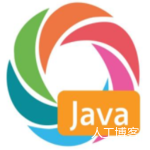java学习-springboot实现自定义WebFilter插件
郑重声明: 本文首发于人工博客
1、背景
需求是这样的,需要自定义一个http插件可以对request的请求按照规则进行改写,对返回结果进行校验和脱敏。提供给其他人使用,要求对接简单。无业务侵入性。
2、技术选型
- springboot
- filter
3、需要解决的问题
- 要改写request和response就必须自定义实现HttpServletRequestWrapper
和HttpServletResponseWrapper - 通用方案的话就需要把业务抽象出来以接口的方式让对接方来实现
- fileter的自动注册与扫描路径的问题,减少对接方的工作量和理解成本
4、细节说明
4.1 自定义实现HttpServletRequestWrapper
主要是实现一些自己需要关注的属性相关的方法,比如header、param、body、url
@Slf4j
public class RgHttpServletRequestWrapper extends HttpServletRequestWrapper {
private static final String UTF8 = "UTF-8";
private final String urlKey = "url";
private final String paramsKey = "params";
private final String headersKey = "headers";
private final String bodyKey = "body";
private final byte[] body;
private final Map<String, String> customHeaders;
private final Map<String, String> customParams;
private final StringBuffer stringBuffer = new StringBuffer();
private final StringBuilder urlStringBuffer = new StringBuilder();
private Gson gson = new Gson();
public RgHttpServletRequestWrapper(
HttpServletRequest request,
Map<String, String> cacheMap,
Map<String, Object> urlMatchCahce) {
super(request);
Object urlObj = null == urlMatchCahce ? null : urlMatchCahce.get(urlKey);
String url = null == urlObj ? null : urlObj.toString();
Map<String, Object> paramsMap = getMapByKey(urlMatchCahce, paramsKey);
Map<String, Object> headersMap = getMapByKey(urlMatchCahce, headersKey);
Map<String, Object> bodyMap = getMapByKey(urlMatchCahce, bodyKey);
url = DefenferUtil.getRightUrl(url, cacheMap, request, paramsMap);
urlStringBuffer.append(url);
this.customHeaders = DefenferUtil.handlerRequestHeader(request, cacheMap, headersMap);
this.customParams=DefenferUtil.handlerRequestParam(request,cacheMap,paramsMap);
String sessionStream = getBodyString(request);
if (null != cacheMap && StringUtils.isNotBlank(sessionStream)) {
// 替换请求中的参数
Map<String, Object> map = JSON.parseObject(sessionStream, Map.class);
map = mergeCacheData(map, cacheMap, bodyMap);
sessionStream = JSON.toJSONString(map);
}
body = sessionStream.getBytes(Charset.forName(UTF8));
}
public String getBodyString() {
return new String(body, Charset.forName(UTF8));
}
/**
* 获取请求Body
*
* @param request
* @return
*/
private String getBodyString(final ServletRequest request) {
StringBuilder sb = new StringBuilder();
InputStream inputStream = null;
BufferedReader reader = null;
try {
inputStream = cloneInputStream(request.getInputStream());
reader = new BufferedReader(new InputStreamReader(inputStream, Charset.forName(UTF8)));
String line = "";
while ((line = reader.readLine()) != null) {
sb.append(line);
}
} catch (IOException e) {
e.printStackTrace();
} finally {
if (inputStream != null) {
try {
inputStream.close();
} catch (IOException e) {
e.printStackTrace();
}
}
if (reader != null) {
try {
reader.close();
} catch (IOException e) {
e.printStackTrace();
}
}
}
return sb.toString();
}
/**
* Description: 复制输入流</br>
*
* @param inputStream
* @return</br>
*/
public InputStream cloneInputStream(ServletInputStream inputStream) {
ByteArrayOutputStream byteArrayOutputStream = new ByteArrayOutputStream();
byte[] buffer = new byte[1024];
int len;
try {
while ((len = inputStream.read(buffer)) > -1) {
byteArrayOutputStream.write(buffer, 0, len);
}
byteArrayOutputStream.flush();
} catch (IOException e) {
e.printStackTrace();
}
InputStream byteArrayInputStream =
new ByteArrayInputStream(byteArrayOutputStream.toByteArray());
return byteArrayInputStream;
}
@Override
public BufferedReader getReader() throws IOException {
return new BufferedReader(new InputStreamReader(getInputStream()));
}
@Override
public ServletInputStream getInputStream() throws IOException {
final ByteArrayInputStream bais = new ByteArrayInputStream(body);
return new ServletInputStream() {
@Override
public int read() throws IOException {
return bais.read();
}
@Override
public boolean isFinished() {
return false;
}
@Override
public boolean isReady() {
return false;
}
@Override
public void setReadListener(ReadListener readListener) {}
};
}
public void putHeader(String name, String value) {
this.customHeaders.put(name, value);
}
public void removeHeader(String name) {
this.customHeaders.remove(name);
}
@Override
public String getHeader(String name) {
// check the custom headers first
String headerValue = customHeaders.get(name);
if (headerValue != null) {
return headerValue;
}
// else return from into the original wrapped object
return ((HttpServletRequest) getRequest()).getHeader(name);
}
@Override
public Enumeration<String> getHeaders(String name) {
// create a set of the custom header names
Set<String> set = new HashSet<String>();
// now add the headers from the wrapped request object
@SuppressWarnings("unchecked")
Enumeration<String> e = this.getHeaderNames();
while (e.hasMoreElements()) {
// add the names of the request headers into the list
String n = e.nextElement();
if (n.equalsIgnoreCase(name)) {
set.add(getHeader(n));
}
}
// create an enumeration from the set and return
return Collections.enumeration(set);
}
@Override
public Enumeration<String> getHeaderNames() {
// create a set of the custom header names
Set<String> set = new HashSet<String>(customHeaders.keySet());
// now add the headers from the wrapped request object
@SuppressWarnings("unchecked")
Enumeration<String> e = ((HttpServletRequest) getRequest()).getHeaderNames();
while (e.hasMoreElements()) {
// add the names of the request headers into the list
String n = e.nextElement();
set.add(n);
}
// create an enumeration from the set and return
return Collections.enumeration(set);
}
/**
* The default behavior of this method is to return
* getParameter(String name) on the wrapped request object.
*
* @param name
*/
@Override
public String getParameter(String name) {
if(null!=this.customParams && this.customParams.containsKey(name)){
return this.customParams.get(name);
}
return null;
}
}
4.2、自定义实现过滤器
public class DefenderFilter implements Filter {
@Override
public void init(FilterConfig filterConfig) throws ServletException {}
@Override
public void doFilter(ServletRequest request, ServletResponse response, FilterChain chain)
throws IOException, ServletException {
HttpServletRequest hsRequest = (HttpServletRequest) request;
String requestUrl = hsRequest.getRequestURI();
String contextPath = hsRequest.getContextPath();
Map<String, Object> urlMatchedMap =
RgApplicationContextUtil.getBean(UrlMappings.class)
.getUrlMatchedMap(requestUrl.replace(contextPath, ""));
/** 用户的缓存数据 */
Map<String, String> cacheMap =
RgApplicationContextUtil.getBean(SystemCacheConfigurationAware.class)
.getSystemCache(hsRequest);
if (null == cacheMap || cacheMap.isEmpty()) {
log.warn("no cache data,url:{}", requestUrl);
chain.doFilter(request, response);
} else {
RgHttpServletRequestWrapper myHttpServletRequestWrapper =
new RgHttpServletRequestWrapper(hsRequest, cacheMap, urlMatchedMap);
chain.doFilter(myHttpServletRequestWrapper, response);
}
}
@Override
public void destroy() {}
}
4.3 解决自注册问题
@Configuration
public class DefenderConfiguration {
@Autowired private DefenderUrlConfigurationAware defenderUrlConfigurationAware;
@Bean
public UrlMappings urlMappings() {
return new UrlMappings(defenderUrlConfigurationAware.getDefenderUrlMaps());
}
@Bean
public FilterRegistrationBean defenderFilter() {
FilterRegistrationBean registrationBean = new FilterRegistrationBean();
registrationBean.setFilter(new DefenderFilter());
registrationBean.setOrder(Integer.MIN_VALUE);
registrationBean.addUrlPatterns("/*");
return registrationBean;
}
@Bean
@Order()
public RgApplicationContextUtil rgApplicationContextUtil() {
RgApplicationContextUtil rgApplicationContextUtil = new RgApplicationContextUtil();
return rgApplicationContextUtil;
}
}
4.4 增加开启的开关
application上增加这个注解就自动开启了filter的注解功能,是不是很方便
@Documented
@Inherited
@Target({ElementType.TYPE})
@Retention(RetentionPolicy.RUNTIME)
@Import({DefenderConfiguration.class})
public @interface EnableDefender {
}
4.5 分享一个spring的工具类
@Slf4j
public class RgApplicationContextUtil implements ApplicationContextAware {
private static ApplicationContext applicationContext = null;
public static final ApplicationContext getApplicationContext() {
return applicationContext;
}
@Override
public void setApplicationContext(ApplicationContext applicationContext) throws BeansException {
if (Objects.isNull(RgApplicationContextUtil.applicationContext)) {
RgApplicationContextUtil.applicationContext = applicationContext;
}
}
public static final <T> T getBean(String name, Class<T> requiredType) {
try {
return applicationContext.getBean(name, requiredType);
} catch (Exception e) {
log.error("get bean error, beanName:{}, class:{}", name, requiredType.getName());
}
return null;
}
public static final <T> T getBean(Class<T> requiredType) {
try {
return applicationContext.getBean(requiredType);
} catch (Exception e) {
log.error("get bean error class:{}", requiredType.getName());
}
return null;
}
public static final <T> T getBean(Class<T> requiredType, Object... args) {
try {
return applicationContext.getBean(requiredType, args);
} catch (Exception e) {
log.error("get bean error class:{}", requiredType.getName());
}
return null;
}
}

版权声明:本文为人工博客的原创文章,遵循 CC 4.0 BY-SA 版权协议,转载请附上原文出处链接及本声明。
本文链接:https://www.gzcx.net/article/1737
正文到此结束
- 本文标签: Spring Boot http
- 版权声明: 本站原创文章,于2020年02月22日由Mars发布,转载请注明出处












